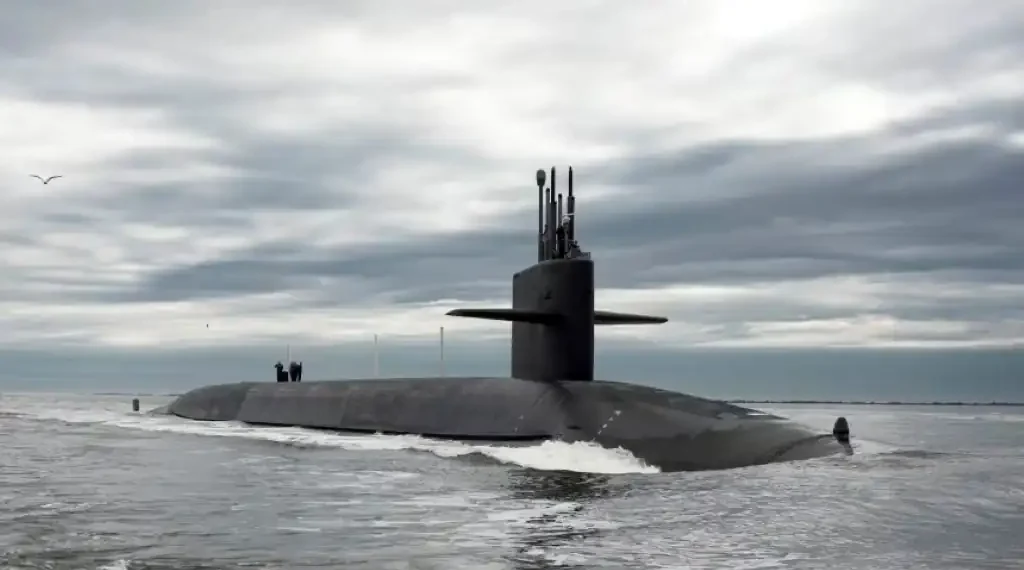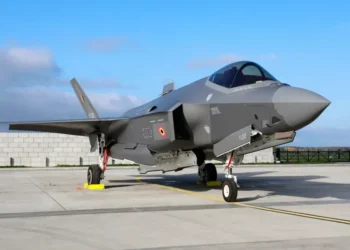Trump Orders Nuclear Sub Deployment Amid Rising Russia Tensions
Writing Time: August 3, 2025, 17:00 EDT
In response to recent remarks from a top Russian official, former U.S. President Donald Trump announced the deployment of two U.S. Navy nuclear submarines to unspecified global regions. While the exact submarine classes and their destinations remain undisclosed, the move underscores ongoing strategic tensions between Washington and Moscow.
The announcement, made via Truth Social on Friday, follows comments by former Russian President Dmitry Medvedev that Trump characterized as “foolish and inflammatory.” The U.S. Navy, as per standard protocol, has not confirmed specific operational details.
Trump’s Statement Raises Strategic Concerns
Trump, in his post, stated:
“I have ordered two Nuclear Submarines to be positioned in the appropriate regions, just in case these foolish and inflammatory statements are more than just that.”
Though he did not clarify which submarines were involved, the mention of nuclear capability suggests a heightened military posture. The move, while largely symbolic, is a reminder of the U.S. military’s readiness and nuclear deterrence capacity.
Inside the U.S. Nuclear Submarine Fleet
The U.S. Navy operates a technologically advanced fleet of nuclear-powered submarines. While all U.S. submarines are nuclear-powered, only a specific subset is armed with nuclear weapons. These submarines fall into three primary categories:
1. Ballistic-Missile Submarines (SSBNs)
The cornerstone of America’s sea-based nuclear deterrent, Ohio-class SSBNs—nicknamed “boomers”—are built for stealth and strategic endurance.
- Fleet Size: 14 submarines
- Armament: Each carries up to 20 Trident II D5 ballistic missiles with multiple nuclear warheads.
- Range: Trident missiles have an estimated range of 4,600 miles, enabling global strike capabilities from virtually any ocean.
- Stealth & Survivability: These subs are designed to survive a first strike and respond with overwhelming force.
- Crew Size: Approximately 159 personnel
- Dimensions: 560 feet long, displacing 18,750 tons submerged
These submarines rarely disclose their movements, which are among the most tightly guarded military secrets in the U.S. arsenal.
2. Guided-Missile Submarines (SSGNs)
Four former Ohio-class SSBNs were converted into SSGNs in the early 2000s to bolster the Navy’s conventional strike and special operations capabilities.
- Armament: Each can launch up to 154 Tomahawk cruise missiles
- Tactical Role: These subs support rapid land attack and can also deploy special operations forces via modified launch tubes.
- Visibility: Although movements are classified, they are sometimes revealed during periods of geopolitical tension to serve as a deterrence signal.
3. Fast-Attack Submarines (SSNs)
Designed for a range of missions, fast-attack submarines represent the largest segment of the U.S. submarine fleet.
Classes include:
Virginia-Class
- Modern & versatile, with 23 commissioned as of mid-2025
- Size: Up to 461 feet long
- Crew: Approximately 145
- Capabilities: Land attack, surveillance, anti-submarine warfare
Los Angeles-Class
- Older design, still forming the backbone of the fleet with 23 active subs
- Size: 360 feet long
- Displacement: 6,900 tons
- Weapons: Torpedoes and Tomahawk missiles
Seawolf-Class
- Elite and specialized, with only three submarines
- USS Jimmy Carter: Extended hull enables classified research and advanced operations
- Notable Feature: Enhanced warfighting and intelligence capabilities
Strategic Implications of Submarine Deployment
If ballistic-missile submarines are among those ordered to redeploy, it signals a serious shift in U.S. military posture. These submarines can remain undetected for months and serve as a powerful second-strike platform in the event of nuclear escalation.
Experts note that even guided-missile or fast-attack submarines sent near potential hotspots serve a clear message of deterrence, especially if positioned near Russia’s sphere of influence.
Background on Medvedev’s Remarks
Dmitry Medvedev, now deputy chairman of Russia’s Security Council and an ally of President Vladimir Putin, recently made controversial statements suggesting the possibility of military conflict with the West. Trump’s decision to reposition American assets may be a direct counter to such rhetoric.
Although current U.S. leadership has not officially commented on Trump’s announcement, military analysts speculate that any actual deployment would require coordination through the Department of Defense.
Conclusion: A Signal of Readiness Amid Global Tension
While details remain classified, the potential redeployment of U.S. nuclear submarines highlights enduring global security concerns. Whether the action leads to increased transparency or further escalation remains to be seen. However, it confirms that the U.S. Navy’s undersea fleet remains a vital pillar of deterrence and power projection in uncertain times.
This article was rewritten by JournosNews.com based on verified reporting from trusted sources. The content has been independently reviewed, fact-checked, and edited for accuracy, neutrality, tone, and global readability in accordance with Google News and AdSense standards.
All opinions, quotes, or statements from contributors, experts, or sourced organizations do not necessarily reflect the views of JournosNews.com. JournosNews.com maintains full editorial independence from any external funders, sponsors, or organizations.
Stay informed with JournosNews.com — your trusted source for verified global reporting and in-depth analysis. Follow us on Google News, BlueSky, and X for real-time updates.













